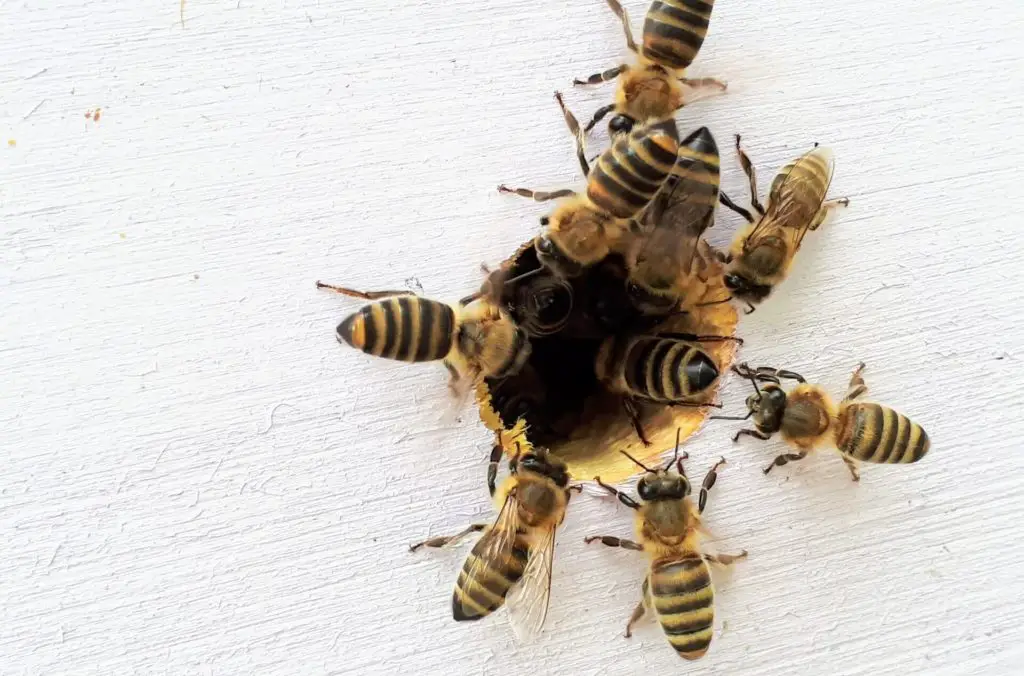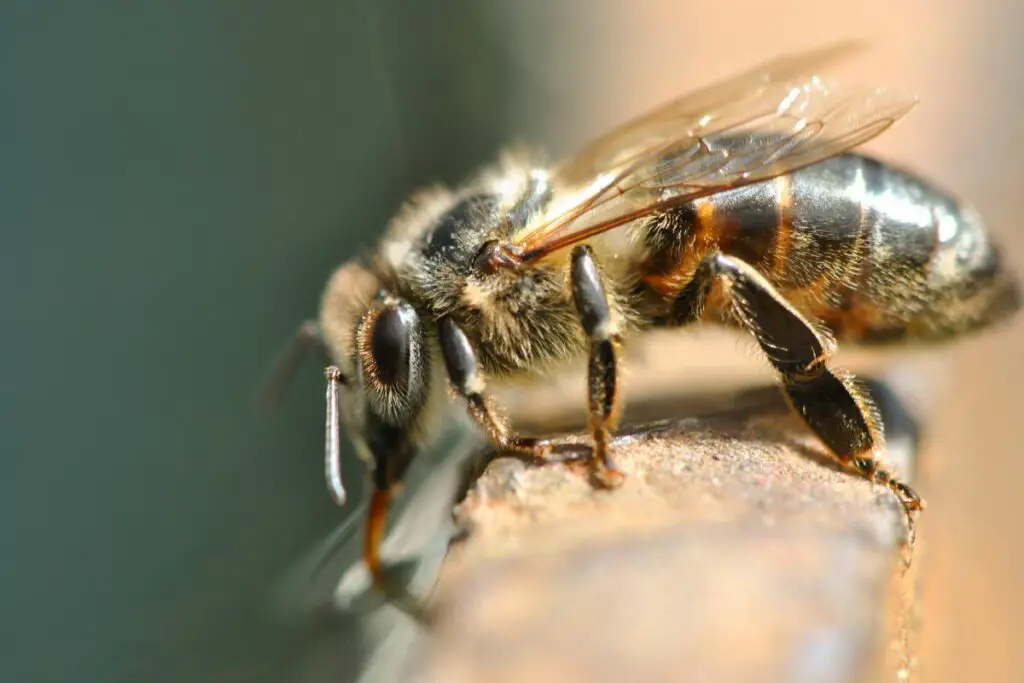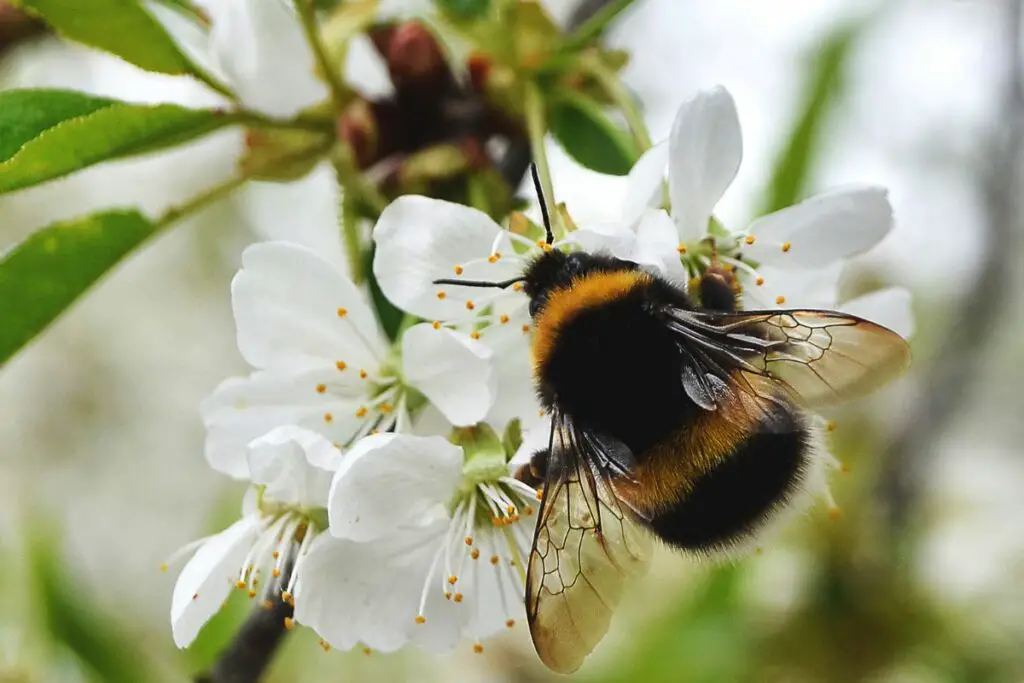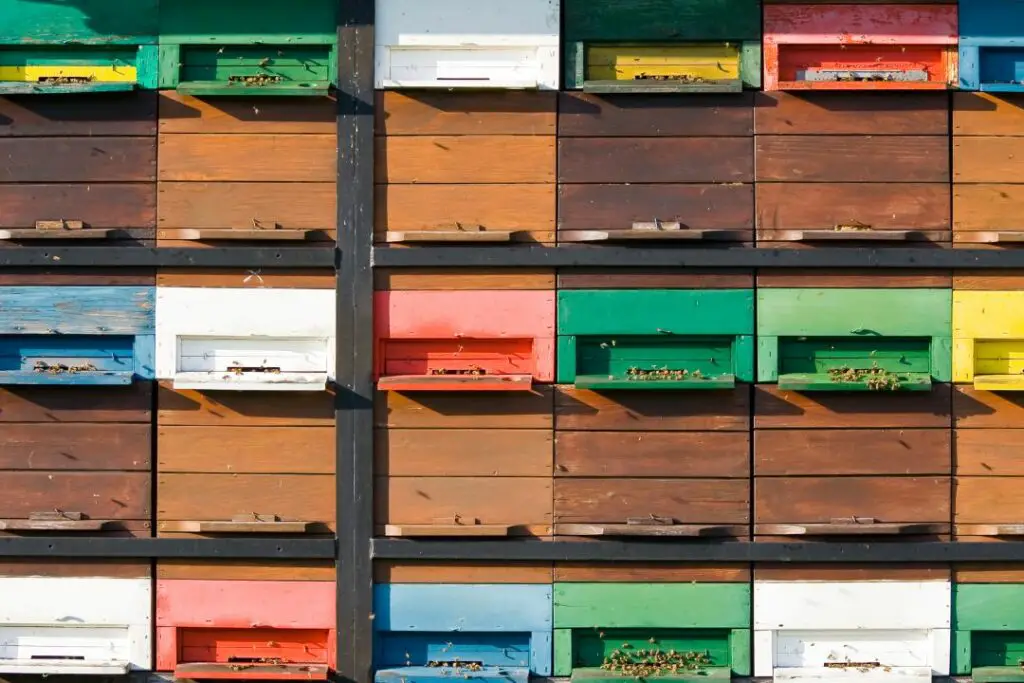Last updated on January 5th, 2024 at 02:38 pm
Have you ever observed honeybees wiggling their bums in the form of a strange dance-like motion and wondered what they’re doing and why?
Well look no further, we’ve gone ahead and found out exactly why bees wiggle their bums and the myriad of reasons they might do it.
Let’s take a closer look at our gyrating, booty-shaking friends and answer the question, why do bees shake their bums?
So Why Do Bees Twerk?
Bees shake their bums or “waggle dance” to communicate the location and distance of food sources. By varying the duration, speed, and angle of the dance they convey important information about the direction and quality of the food source to their fellow bees.
First of all, it’s incredible that bees have such an intricate form of communication but how does it all work?
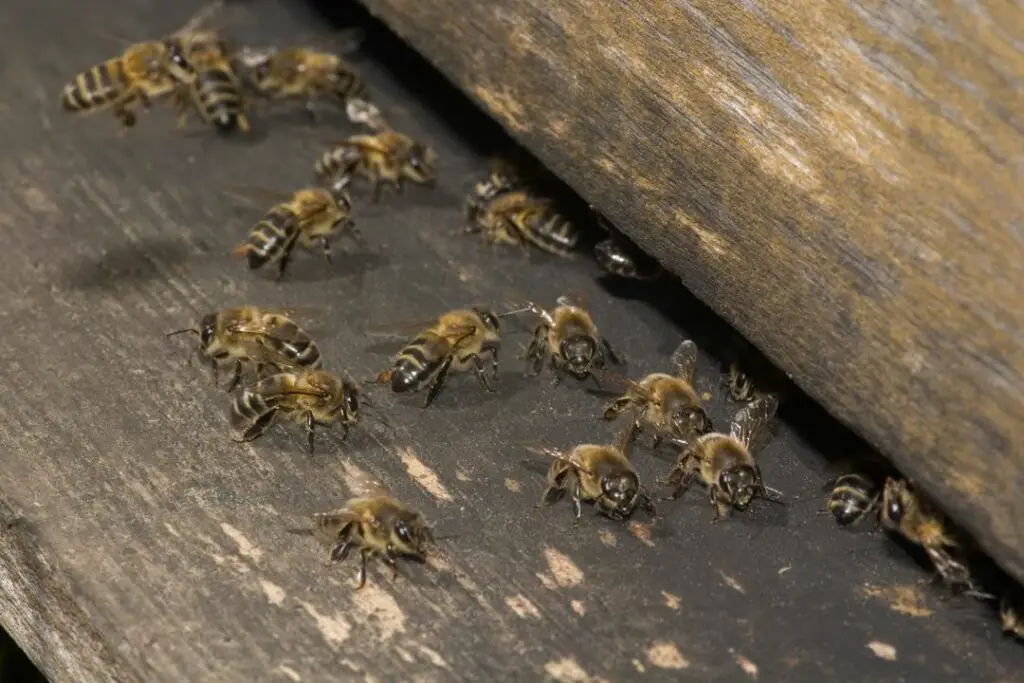
What Is The Waggle Dance?
A honeybee waggle dance is a unique communication method that honeybees use to tell other bees where food is.
Honeybees live in colonies that are made up of hundreds and sometimes thousands of bees. To get from their hive to the flowers where they gather nectar, these bees need to get help from other bees.
That’s why the waggle dance was developed: it’s a way for one bee to communicate with others about the location of food so that they can all go to it.
The waggle dance is performed on the vertical surface of a comb in front of other bees, who are watching from below.
The dancer moves forward and backwards in a figure-eight pattern, which creates the illusion of movement along a straight line to the nectar source.
The angle at which the dancer moves forward and backwards determines how far away the nectar source is from the hive.
The higher up on the comb the dancer starts, the farther away from home it is.
Check out this short video on the waggle dance from BBC Earth.
Other Physical Signals Used By Honeybees
Alongside the waggle dance, a honeybee has a range of other visual and physical cues it can use to alert and signal other members of the hive.
Buzzing through the hive
If a worker bee proceeds to buzz her wings frantically through the hive it’s a clear cue to other worker bees that an exodus is about to begin. This cue is typically used to signal a colony leaving a hive and initiates the colony to swarm.
Why Do Bees Abdomen Pulsate?
If you can see the whole abdomen pulsing chances are this isn’t a form of communication but actually, the bee breathing in and out.
Bees don’t have lungs like us so this isn’t breathing as we know it but still performs the same process. A honeybee’s body is covered with tiny holes that can’t be seen by the human eye.
- 🐝🐝🐝 Wildlife Gifts To Help Bees & Pollinators - Your Bee Revival Keyring contains a special...
- 🎁🎁🎁 Bee Gifts For Women - Give the gift of giving with our bee accessories from Revive a...
- 🌱🌱🌱 Plantable Seed Paper Packaging/Seed Gifts - What makes the perfect eco gift? We think...
- 🌍🌎🌏 Planet Friendly Gadget Keyring - A great gift for a friend or loved one who cares about...
- 🐾🐾🐾 Supports Rewilding Britain - A percentage of every sale will be donated to Rewilding...
These holes are called spiracles, each hole is attached to tubes called tracheae which allow the bee to absorb oxygen and breathe.
Typically this processor diffusion occurs without any visible movement of the bee.
During periods of exertion (like foraging for nectar and pollen), the tracheae are forced to work harder, resulting in the pulsing motion observed in a honeybee’s abdomen.
Why Are Bees Raising Their Tails In The Air?
Another common sight amongst honeybees is workers raising their tails in the air while in the company of other workers from the same hive.
While this can look slightly comical it plays a vital role in communication.
There is a gland positioned on the tail of worker bees called a Nasonov gland.
This gland is responsible for releasing the Nasonov scent which is used by bees to mark locations that have previously been unvisited like foraging or water sources.
Interestingly this scent is also used by queens to locate their hive after returning from a mating flight.
Conclusion
Why do bees wiggle their bums? It’s simple to communicate. All of the different movements honeybees make are used to signal with their kin and each distinct movement holds a clear message for the hive’s other inhabitants.
If you found this short read interesting then don’t miss our other fascinating reads below where we dive into your local wildlife to find out more about the wonderful world of insects.

